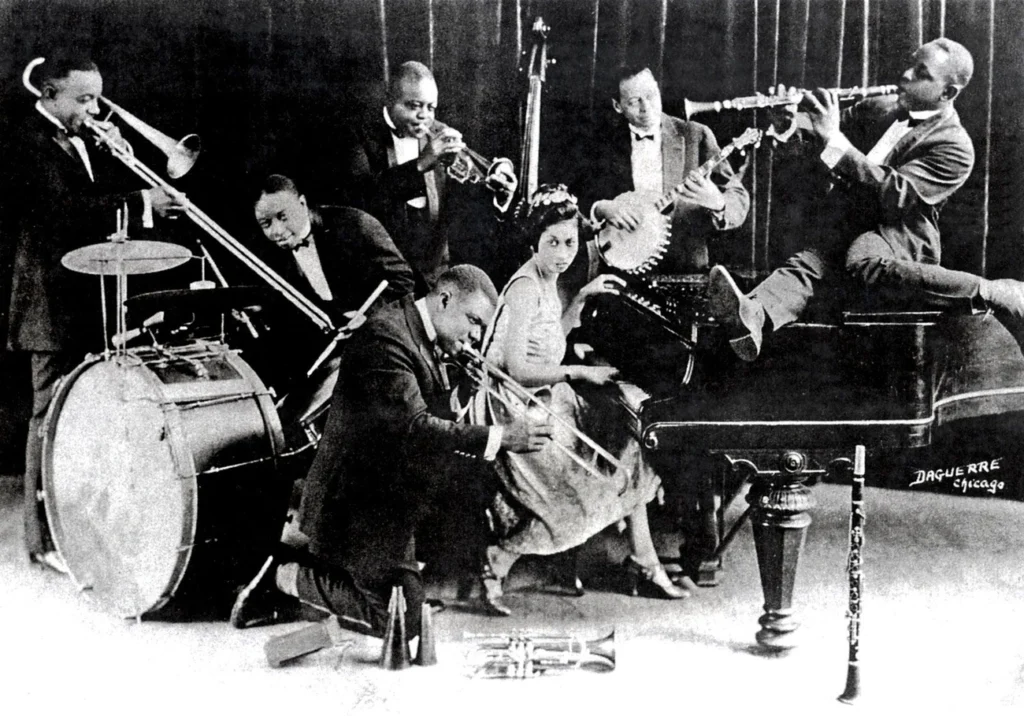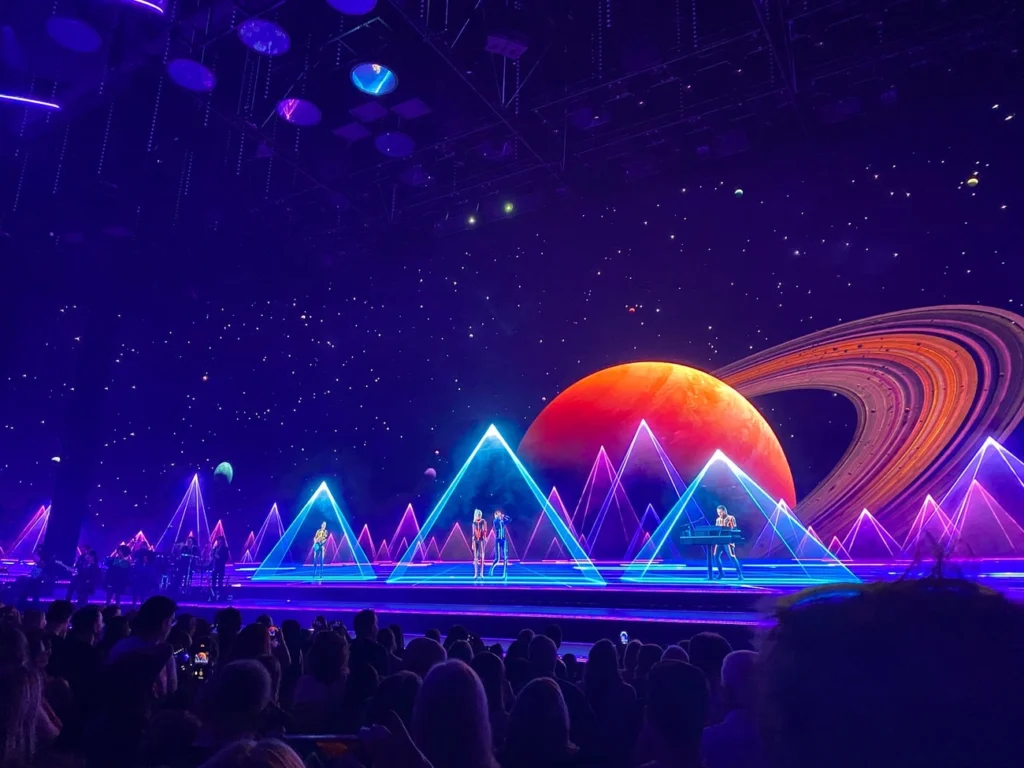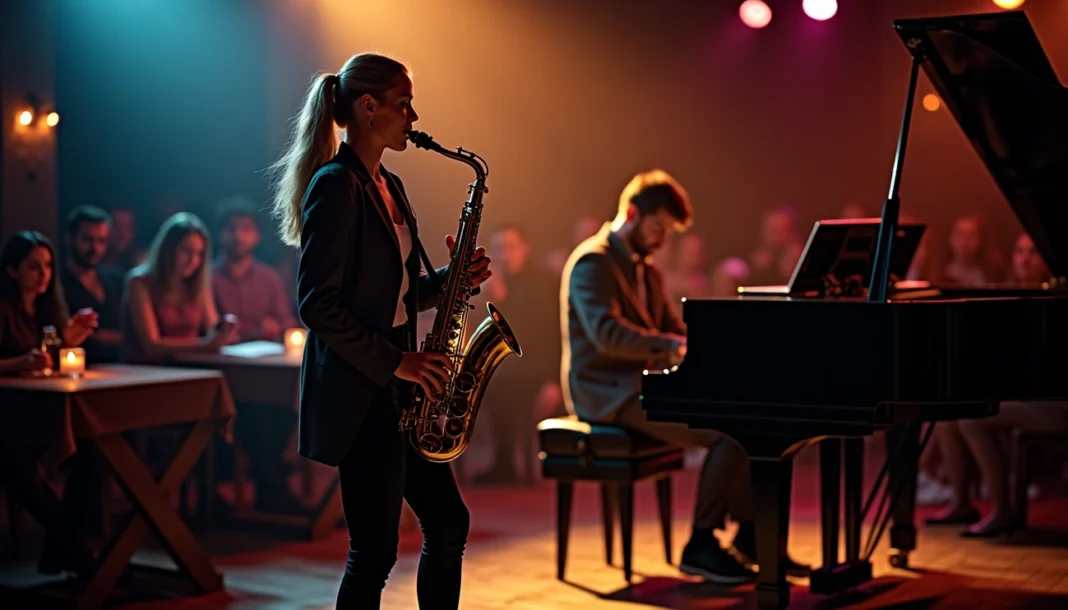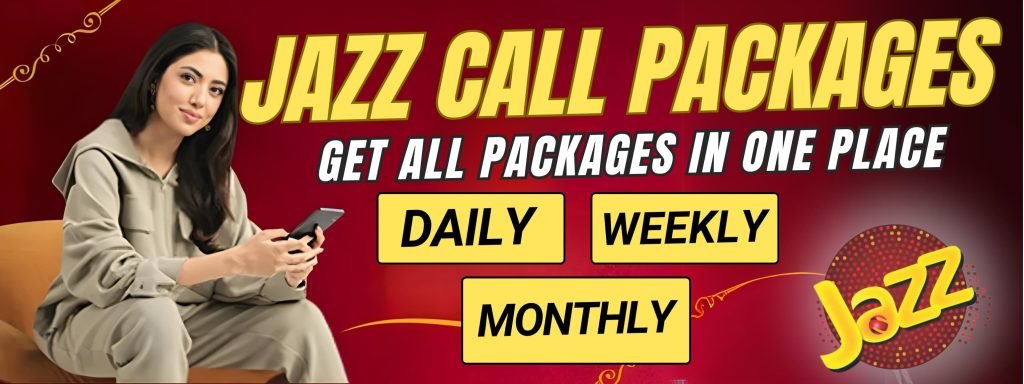The jazz world continues to thrive with remarkable reach, particularly in Pakistan where Jazz boasts 73 million subscribers and maintains the highest market share at 37% among all mobile network operators. When you explore the evolution of this telecommunications giant, you’ll discover it began as Mobilink in 1994, starting as a joint venture between Saif Group and Motorola Inc.
However, the landscape changed significantly in 2016 when Jazz completed its acquisition of Warid Pakistan, creating a combined subscriber base of 50 million. Additionally, VEON solidified its position in March 2021 by acquiring the remaining 15% of shares from Abu Dhabi Group for US$273 million, bringing its ownership to 100%.
As you delve into this article, you’ll discover why the jazz world remains captivating, from its rich musical heritage to its modern digital platforms, exploring how this genre continues to evolve while maintaining its timeless appeal to music lovers everywhere.
The Roots of Jazz and Its Timeless Appeal


Unlike today’s digital music platforms, jazz emerged from humble beginnings in the late 19th century. Initially, this revolutionary art form took root in the southern United States, specifically New Orleans, where diverse cultural influences created the perfect environment for musical innovation.
How jazz began and evolved
Jazz originated as a unique fusion of musical traditions, drawing from African rhythms, European harmonic structures, and American influences. The genre’s foundations were built upon a rich tapestry of blues, ragtime, spirituals, and marching band music.
New Orleans stands as the cradle of jazz, its diverse cultural landscape providing fertile ground for this revolutionary genre to flourish. The city’s unique mixture of African, Caribbean, and European cultures created a musical melting pot that birthed jazz’s distinctive sound.
As the 1920s arrived—often called the Jazz Age—the genre exploded in popularity, establishing iconic venues like New York’s Cotton Club. During this era, jazz bands gained national recognition and began profoundly influencing popular culture. The music continued evolving through subsequent decades, developing into swing, bebop, cool jazz, and numerous other styles that expanded its artistic horizons.
Key figures who shaped the genre
Louis Armstrong revolutionized jazz through his magnetic personality and virtuosic trumpet playing. His distinctive gravelly voice and innovative solos established new standards for future generations. Duke Ellington, another towering figure, brought sophistication to the genre, creating over 3,000 compositions throughout his career. His famous orchestra performed consistently for over 50 years, surviving beyond the big band swing era.
Other pivotal innovators include Charlie Parker, whose alto saxophone playing helped develop bebop’s complex harmonies and fast tempos, and Miles Davis, whose groundbreaking album “Kind of Blue” remains a masterpiece of modern jazz.
Why jazz has always stood out
Jazz distinguishes itself through several unique characteristics. Foremost is its improvisational spirit—unlike European classical music that prioritizes composers, jazz celebrates performers’ spontaneous creativity. This emphasis on individual expression creates a personal connection with audiences that few other genres achieve.
Furthermore, the rhythmic complexity and syncopation in jazz set it apart from other musical forms of its time. The genre’s emotional depth allows musicians to convey profound feelings through their performances, creating a musical language that continues to resonate with listeners despite being over a century old.
Modern Jazz in 2025: A Genre Reinvented
“Jazz is the type of music that can absorb so many things and still be jazz.” — Sonny Rollins, Iconic jazz tenor saxophonist and composer
In 2025, jazz continues to evolve beyond traditional boundaries, embracing innovative sounds and digital platforms. The genre has transformed itself while maintaining its improvisational soul, reaching new audiences through modern approaches.
Jazz fusion and cross-genre collaborations
Jazz fusion has experienced a remarkable resurgence, especially among younger generations. Musicians regularly blend jazz with diverse genres including hip-hop, electronic music, and R&B to create groundbreaking sounds. This cross-pollination has expanded jazz’s appeal, with artists like:
- Kamasi Washington collaborating with Kendrick Lamar and Herbie Hancock
- Robert Glasper merging jazz with R&B and hip-hop alongside Erykah Badu
- Snarky Puppy fusing jazz and funk elements with artists like Smino
These collaborations serve as cultural bridges, introducing jazz to listeners through familiar contexts. Major events like Montreux Jazz Festival and Newport Jazz Festival now showcase these genre-blending performers, attracting younger, more diverse crowds.
The rise of digital jazz platforms
Technology has revolutionized how jazz music is created and shared in 2025. Digital audio workstations enable sophisticated home recording and remote collaboration between musicians. Meanwhile, Jazz-Con 2025, a fully virtual conference taking place in September, will feature 36 speakers from 13 countries across five continents. Sessions in English, Spanish, and Japanese—with auto-captions in 20+ languages—will cover streaming strategies, rights collection, and digital innovation.
Jazz world app and online communities
The Jazz World app has undergone a significant transformation, rebranding as SIMOSA. This revamped platform now offers services for multiple network operators with enhanced lifestyle and e-care features. With 18 million monthly users and over 1 billion impressions, SIMOSA has solidified its status as a dominant force in Pakistan’s digital realm.
How young artists are reshaping jazz
Today’s emerging jazz musicians are redefining the genre with diverse influences. Shabaka Hutchings leads three different bands, each shaping jazz’s future: Shabaka & The Ancestors, Sons of Kemet, and The Comet Is Coming. Other innovative artists include Nubya Garcia, whose music infuses Afrobeat elements, and Makaya McCraven, who blends avant-garde jazz with hip-hop rhythms. These young musicians embrace technology and global influences, expanding jazz’s boundaries while honoring its improvisational tradition.
Why Jazz Still Resonates with Listeners Today
Beyond technical innovation, jazz’s enduring appeal lies in its profound ability to connect with listeners at an emotional level. Throughout its evolution, this genre has maintained its power to move audiences worldwide.
“Jazz music is the power of now. There is no script. It’s conversation. The emotion is given to you by musicians as they make split-second decisions to fulfill what they feel the moment requires.” — Wynton Marsalis, Artistic Director of Jazz at Lincoln Center, Pulitzer Prize-winning trumpeter and composer
Emotional depth and improvisation
The improvisational nature of jazz creates a spontaneous expression that resonates deeply with our emotional core. Jazz musicians use their instruments to weave intricate, evocative musical tales that invite listeners into their personal experiences. This art form evokes a broad spectrum of feelings—from exuberance to melancholy—creating a safe space for emotional release. Above all, jazz’s improvisational freedom allows both performers and audiences to process complex emotions in a uniquely personal way.
Jazz as a storytelling medium
Jazz performances embody authentic storytelling through sound. “He always told a little story,” remarked Lester Young about fellow musician Frankie Trumbauer, highlighting jazz’s narrative quality.
Much like skilled storytellers who vary their rhythm and pacing, jazz musicians construct and connect phrases while controlling dynamics to create compelling musical narratives. This conversational character turns solos into distinct stories that communicate directly to listeners.
Cultural identity and global influence
Born from African American experiences, jazz narrates a people’s response to oppression while expressing artistic abilities previously denied. The music has since traveled globally, with Japanese musicians embracing bebop, Congolese artists developing their own jazz traditions, and South African performers like Hugh Masekela blending jazz with local sounds.
Consequently, jazz now serves as a powerful tool for cultural diplomacy, its foundation of inclusive self-expression transcending geographical boundaries.
The Future of Jazz: Where Is It Headed?


Innovation drives jazz forward as technology reshapes how musicians create and share their art. Looking at current trends reveals exciting possibilities for this ever-evolving genre.
AI and jazz composition
AI has become a creative partner rather than a replacement for human musicians. Neural audio synthesis allows performers to “jam” with artificial intelligence during live performances. For instance, AI trained on vocal databases can respond to drum inputs in real-time, creating beatboxing effects that mirror rhythmic patterns. Jazz educators now incorporate AI as a tool for helping students overcome creative blocks and explore new approaches.
Virtual jazz concerts and metaverse stages
Virtual reality concerts represent a rapidly growing segment of the music industry. According to recent studies, 70% of VR concert attendees consider these experiences “the future of the music industry”. Most respondents (82%) find VR concerts more accessible than in-person events, citing benefits like no location restrictions, disability accommodation, and lower costs.
Jazz education in the digital age
Technology has transformed teaching methods across jazz programs. Smart classrooms with audio-visual capabilities provide immediate access to historical recordings and performances. As one educator noted, “Having so much video footage on YouTube has really revolutionized how I teach jazz history”. Online resources enable students to research, produce recordings, and distribute their music professionally.
Conclusion
Jazz stands as both a historical treasure and a living, breathing art form that continues to captivate audiences worldwide. Throughout its journey from the streets of New Orleans to virtual reality concerts and AI collaborations, jazz has maintained its core elements of improvisation, emotional expression, and cultural significance.
The genre’s ability to adapt while preserving its essence explains why it remains relevant in 2025. Rather than becoming a museum piece, jazz has embraced technological innovations and cross-genre partnerships that have expanded its reach to new generations. You can now experience jazz through immersive digital platforms, witness AI-human collaborations, or attend virtual concerts that break down geographical barriers.
Additionally, the emotional depth of jazz continues to resonate with listeners seeking authentic musical experiences. Unlike algorithmically produced popular music, jazz offers genuine human connection through improvisation and storytelling. Each performance tells a unique story—whether experienced in an intimate club or through the latest VR technology.
Jazz education has likewise evolved, empowering students with digital tools while honoring the genre’s rich traditions. This balance between respecting jazz history and embracing innovation ensures the genre will thrive for generations to come.
Undoubtedly, as we look ahead, jazz will continue its remarkable journey of transformation. The genre that once soundtracked the Roaring Twenties now accompanies us into an era of unprecedented technological change, still offering what it always has—authentic human expression through sound. After more than a century of evolution, the jazz world remains as captivating as ever, inviting you to participate in its ongoing story of musical exploration and cultural significance.
Key Takeaways
Jazz continues to thrive in 2025 by embracing innovation while preserving its improvisational soul, proving that timeless art forms can evolve without losing their essence.
• Jazz fusion with hip-hop, electronic, and R&B creates fresh sounds that attract younger audiences while honoring traditional improvisation • Digital platforms and AI collaboration tools enable remote music creation and real-time performance partnerships between humans and machines • Virtual reality concerts make jazz more accessible globally, with 82% of attendees finding VR events easier to attend than live shows • The genre’s emotional storytelling through improvisation provides authentic human connection in an increasingly digital world • Modern jazz education combines traditional methods with YouTube archives and smart classroom technology to teach both history and innovation
Jazz’s ability to adapt technologically while maintaining its core values of spontaneous expression and cultural storytelling ensures its continued relevance for future generations of music lovers worldwide.
FAQs
Q1. Is jazz still popular in 2025?
Yes, jazz remains popular in 2025. The genre has evolved to embrace new technologies and cross-genre collaborations, attracting younger audiences while maintaining its improvisational core. Jazz fusion with hip-hop, electronic, and R&B creates fresh sounds that appeal to modern listeners.
Q2. How has technology impacted jazz in recent years?
Technology has significantly impacted jazz, enabling remote collaborations, AI-assisted compositions, and virtual reality concerts. Digital platforms have made jazz more accessible globally, while AI tools are being used in both performance and education to explore new creative possibilities.
Q3. What makes jazz unique compared to other music genres?
Jazz stands out due to its emphasis on improvisation, emotional depth, and storytelling through music. Unlike many other genres, jazz allows for spontaneous creativity during performances, creating a unique connection between musicians and audiences. Its ability to convey complex emotions and narratives through sound sets it apart.
Q4. How are young artists shaping the future of jazz?
Young jazz artists are redefining the genre by incorporating diverse influences and embracing technology. They’re creating innovative fusions with other genres, using digital tools for composition and performance, and expanding jazz’s boundaries while honoring its improvisational tradition.
Q5. How has jazz education evolved in the digital age?
Jazz education has adapted to the digital age by incorporating smart classrooms, online resources, and AI tools. Students now have access to vast archives of historical recordings and performances through platforms like YouTube. Digital audio workstations and other technologies enable students to produce and distribute their music professionally, preparing them for the modern music industry.











